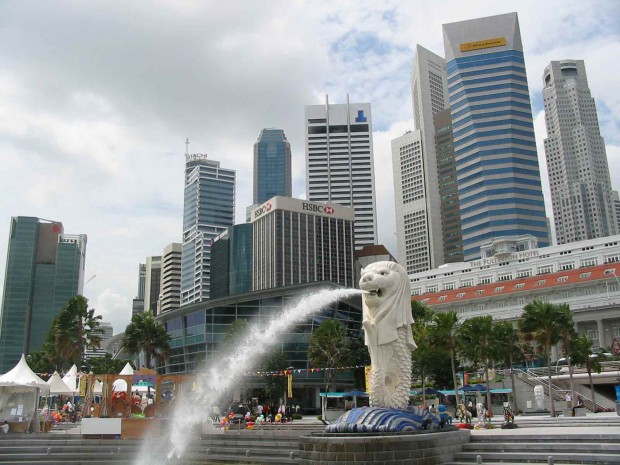HONG KONG (Dow Jones Investment Banker) – Singapore Exchange Ltd. (SGX) may have made headlines this year with the listing of one of Asia’s largest IPOs, Hutchison Port Holdings Trust, and, potentially, with the proposed flotation of Manchester United F.C., but Chinese mid-caps are increasingly leaving the shores of the Lion City to seek a quotation in Hong Kong. The reasons include, above all, greater liquidity, a wider following on the part of sell-side research analysts and, ultimately, a higher valuation.
The SGX portrays itself as an “Asian gateway” and as “Asia’s most internationalized exchange”, as more than 40% of its listed companies are from outside of Singapore. By contrast, the catch phrase of Hong Kong Exchanges and Clearing Ltd. (HKEx) is “China’s World Market.” Both are accurate.
Data from Dealogic shows that a total of 26 “S-chips,” Chinese companies that are listed in Singapore, carried out an IPO there of US$50 million equivalent or more since 2000. Of these, only six currently achieve an average daily trading volume (ADTV) of US$500,000 or more, while nine posted an ADTV of less than US$100,000. Four delisted altogether from the exchange, or were liquidated.

Li Ka-shing’s Fortune Real Estate Investment Trust, which initially listed in Singapore in 2003 at a time when REITs were not allowed in Hong Kong, subsequently sought a quotation on HKEx in 2010 to reflect the geographical location of its assets. As measured over the last three months, Fortune REIT now achieves an ADTV that is twice as high in Hong Kong as in Singapore, despite a process that requires between nine and 13 days (and at a cost to investors) for the transfer of units from one market to the other.
Other companies have taken an even more radical step, delisting from the SGX altogether to re-list in Hong Kong. Taiwanese food manufacturer Want Want China Holdings voluntarily left the SGX in 2007 to re-list on HKEx in 2008 after a corporate re-organization. The de-listing valued the company at about US$3 billion at the time, which compares with a market capitalization today in excess of US$11 billion, a dramatic improvement. In 2009, Hainan-based Sihuan Pharmaceutical Holdings, a manufacturer of heart drugs, achieved an almost 10-fold increase in value, following its US$741 million IPO in Hong Kong. Sofa manufacturer Man Wah Holdings didn’t fare as well, perhaps as a result of a difficult flotation that had to be re-priced, but still managed to double its P/E.
Coming to market in Hong Kong in September, with a US$200-300 million IPO led by Citi and DBS Bank, is Hongguo International Holdings Ltd, a shoe manufacturer and retailer from Nanjing, which left the Singapore market in 2010. Food company China Lifestyle Food & Beverages, which last traded there in April 2010, also seeks up to US$200 million in Hong Kong through Citi and Bank of China International. Others are sure to follow, from China’s attractive consumer sector in particular.
These companies variously cite a lack of understanding on the part of local investors as the main explanation for their poor following in Singapore, and subsequent move to Hong Kong. However, a number of these perhaps also came to market too early, as well as through IPOs that were modest in size and distributed to a narrow and largely domestic investor base–hindering sell-side research in the ensuing years. A quick look at some of these companies’ websites also shows obvious weaknesses on the investor relations and communication fronts.
But it remains the case that some issuers have achieved a dramatic jump in their market capitalizations in a very short space of time as a result of the listing arbitrage and, sometimes, without any interim restructuring work.
A sizeable Hong Kong IPO necessarily creates the buzz and disclosure to ensure these issuers can embark on a new journey as a public company that captures investors’ imagination, and results in a material impact on valuation.
What is first and foremost needed in Singapore is a boost in trading volumes, which also implies a much more active primary equity market. Until then, the S-chip universe will provide a fertile hunting ground for both Hong Kong’s ECM bankers and financial sponsors.
(Philippe Espinasse worked as an investment banker in the U.S., Europe and Asia for more than 19 years and now writes and works as an independent consultant in Hong Kong. Visit his website at https://www.ipo-book.com. Readers should be aware that Philippe may own securities related to companies he writes about, may act as a consultant to companies he mentions and may know individuals cited in his articles. To comment on this column, please email [email protected]).
[This article was originally published on Dow Jones Investment Banker on 23 August 2011 and is reproduced with permission.]
Copyright (c) 2011, Dow Jones & Company, Inc.
